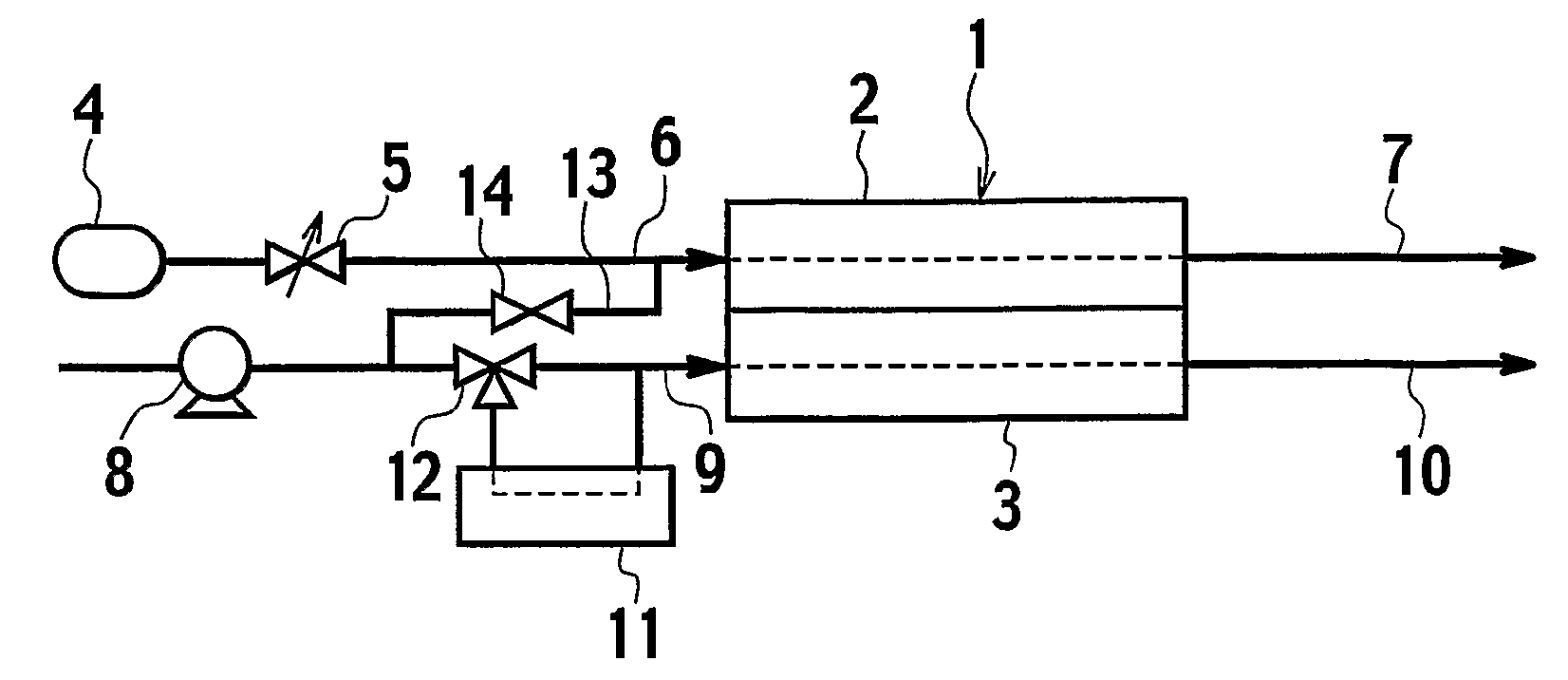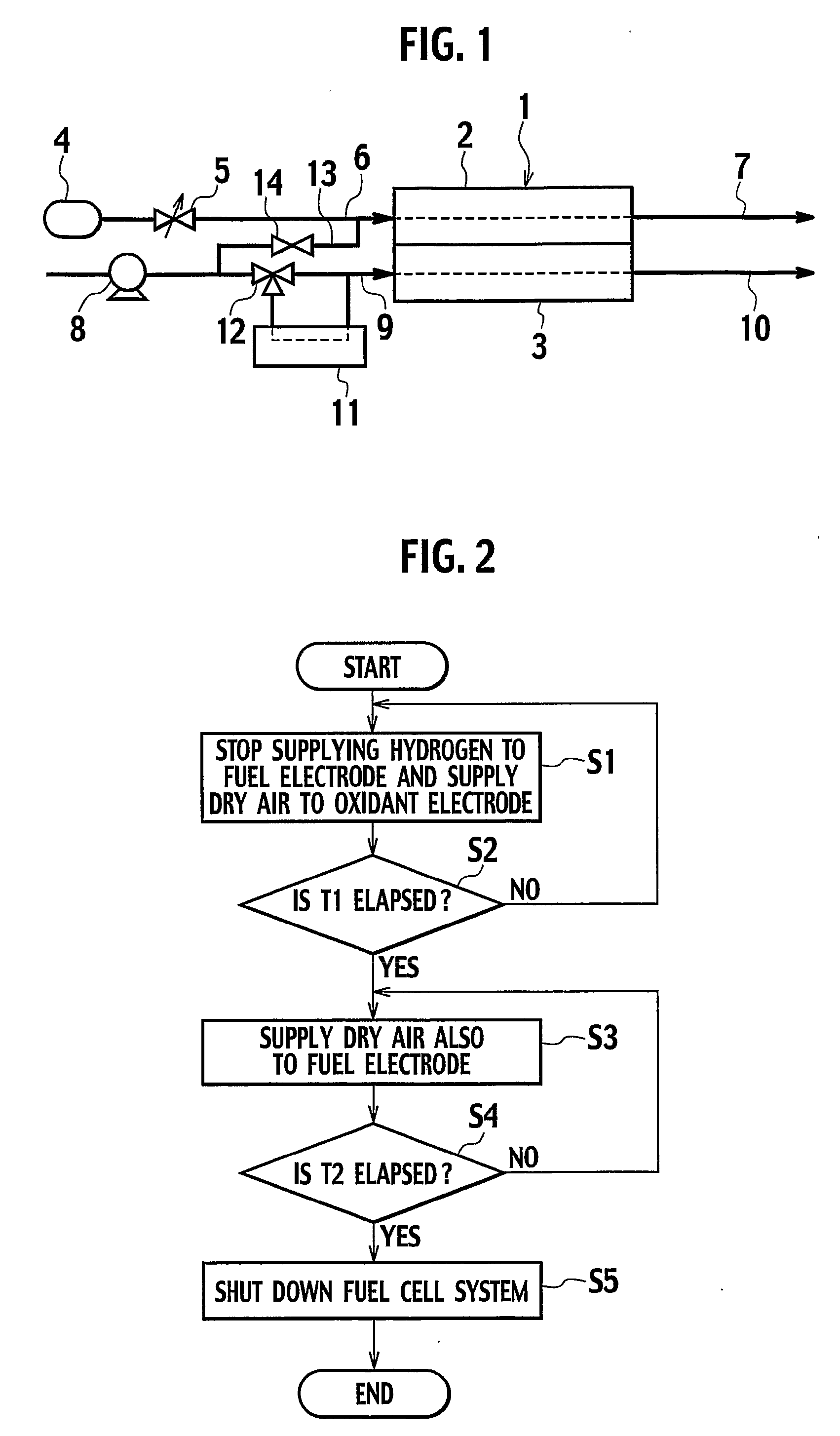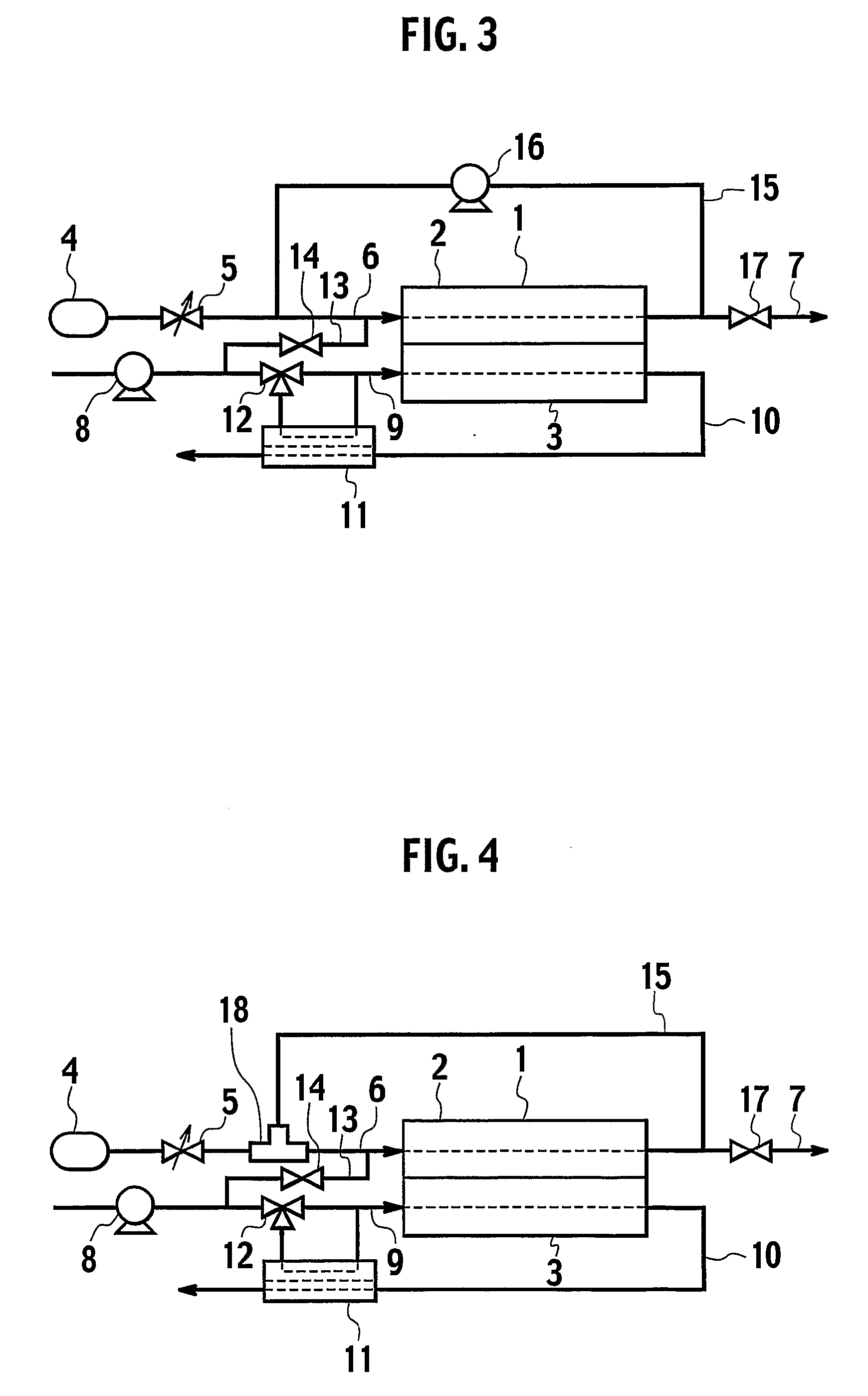Fuel Cell System
a fuel cell and system technology, applied in the field of fuel cell systems, can solve the problems of disadvantageous deterioration of the catalyst layer, sometimes unsuitable method for compact distributed power sources for automobiles, etc., and achieve the effect of suppressing deterioration caused at system shutdown as well as during storag
- Summary
- Abstract
- Description
- Claims
- Application Information
AI Technical Summary
Benefits of technology
Problems solved by technology
Method used
Image
Examples
first embodiment
[0019]FIG. 1 is a diagram showing a schematic configuration of a fuel cell system according to a first embodiment to which the present invention is applied.
[0020] The fuel cell system according to this embodiment includes a fuel cell stack 1 formed by stacking a plurality of fuel cells each of which uses, for example, a proton exchange membrane as an electrolyte. Each cell that constitutes the fuel cell stack 1 has a fuel electrode 2 as an anode and an oxidant electrode 3 as a cathode, and generates electricity when a fuel gas of hydrogen is supplied from a fuel gas supply system to the fuel electrode 2 and an oxidant gas of air is supplied from an oxidant gas supply system to the oxidant electrode 3.
[0021] The fuel gas supply system has, for example a fuel tank 4 in which hydrogen is stored, and delivers hydrogen in the fuel tank 4 via a fuel supply amount regulating valve 5 through a fuel gas supply pipe 6 into the fuel cell stack 1 so as to supply hydrogen to the fuel electrode...
second embodiment
[0029]FIG. 3 is a diagram showing a schematic configuration of a fuel cell system according to a second embodiment to which the present invention is applied.
[0030] The fuel cell system of this embodiment is configured as a fuel cell system employing a fuel circulation method of circulating and reusing redundant hydrogen discharged from the fuel cell stack 1, and is additionally provided with a fuel gas circulating pipe 15 that is used to circulate and reuse hydrogen, between the fuel gas exhaust pipe 7 and the fuel gas supply pipe 6 so as to connect the outlet side of the fuel electrode 2 with the inlet side thereof in the fuel cell stack 1. In the midway part of this fuel gas circulating pipe 15, a circulating pump 16 is disposed which is used to forcibly return, to the fuel gas supply pipe 6, redundant hydrogen unused for electricity generation in the fuel cell stack 1 and thus discharged therefrom. Furthermore, a switching valve 17 is provided downstream from the branch point of...
third embodiment
[0035]FIG. 5 is a diagram showing a schematic configuration of a fuel cell system according to a third embodiment to which the present invention is applied.
[0036] The fuel cell system in this embodiment has the configuration described in the second embodiment and additionally includes charge consumption means 19 for consuming electric charge generated in the fuel cell stack 1 during the operation of system shutdown, voltage detection means 20 for detecting voltage of the fuel cell stack 1, temperature detection means 21 for detecting temperature of cells that constitute the fuel cell stack 1, and resistance measurement means 22 for measuring resistance of cells that constitute the fuel cell stack 1. Other components of the fuel cell system in this embodiment are the same as those in the second embodiment.
[0037] The charge consumption means 19 is connected both to the end of the fuel electrode 2 and to the end of the oxidant electrode 3 through a switch (not shown). When this switc...
PUM
| Property | Measurement | Unit |
|---|---|---|
| voltage | aaaaa | aaaaa |
| flow rate | aaaaa | aaaaa |
| charge consumption | aaaaa | aaaaa |
Abstract
Description
Claims
Application Information
 Login to View More
Login to View More - R&D
- Intellectual Property
- Life Sciences
- Materials
- Tech Scout
- Unparalleled Data Quality
- Higher Quality Content
- 60% Fewer Hallucinations
Browse by: Latest US Patents, China's latest patents, Technical Efficacy Thesaurus, Application Domain, Technology Topic, Popular Technical Reports.
© 2025 PatSnap. All rights reserved.Legal|Privacy policy|Modern Slavery Act Transparency Statement|Sitemap|About US| Contact US: help@patsnap.com



